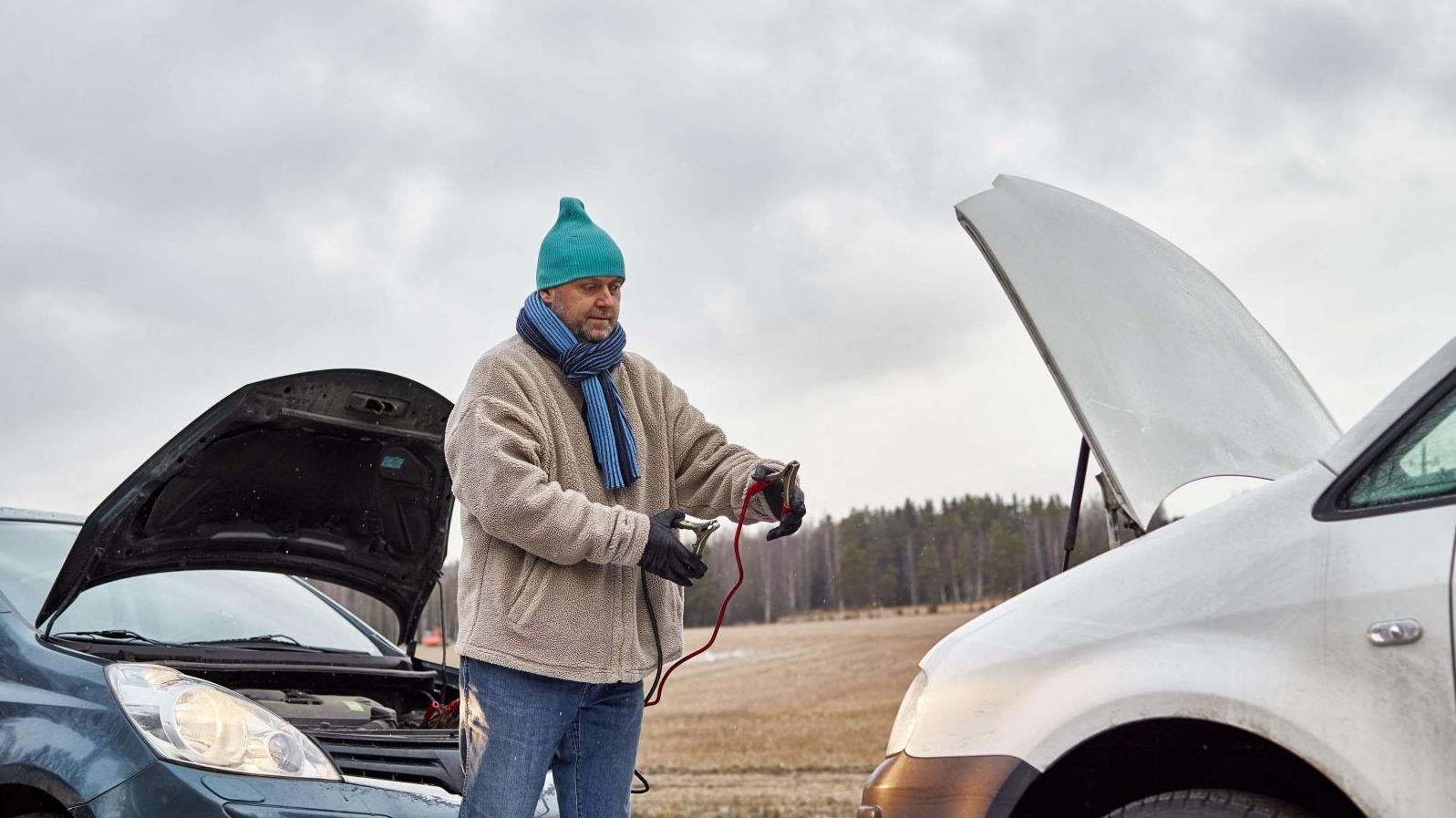
Here's when you should jump start your car — and when you shouldn't
A jump start won't help if your car stops running while you're driving it

A jump start won't help if your car stops running while you're driving it
I have a lot of experience jump starting cars because I’m usually too cheap to buy brand new batteries, and I’m the kind of forgetful that leaves headlights and dome lights on. Please let my lifetime of experience help guide you in your next vehicle breakdown. Jumper cables or a convenient jump box are definitely the kinds of tools you should keep in your arsenal if you’re like me, but they aren’t a magic talisman to ward off vehicle failure conditions. If you’re out driving and your car quits, it doesn’t need a jump.
Far too often I’ve seen cars sitting on the side of the interstate or at an intersection, face to face, connected by the red and black cables of battery revivification. This seems to happen at least once a month, if not more frequently, and it’s annoying that more people don’t know enough about cars to know they’re wasting their time. If you’re sitting at a red light and your car conks out, or if you’re driving on the interstate and the systems die, you don’t need a jump start. More than likely your battery didn’t cause your car’s failure, and if it did, there are larger problems at play here.
Jump starts are great for when your battery doesn’t have enough charge in it to start the car after it’s been sitting. Maybe your car has been sitting with an electrical drain, or it’s really early on a winter morning and the temperature is too cold for your battery to work effectively. Sure, pop it on a jump box or call a friend to give you a battery hit. That’s the time when a jump will be effective, when the car has sat for a bit and won’t start.
Once your car is running, the alternator is charging up the battery and providing enough juice to keep all of the car’s systems operational. The battery basically just acts as a reservoir in the electrical system to get the car running. Once the car is running, the battery is, more or less, along for the ride. If there’s an electrical issue while you’re driving and you start noticing the lights on your dash fading, or the radio is acting weird, you might have an alternator issue that will cause the car to stop running. This can’t be fixed with a jump start, as the car will just fail again as soon as the battery is out of juice.
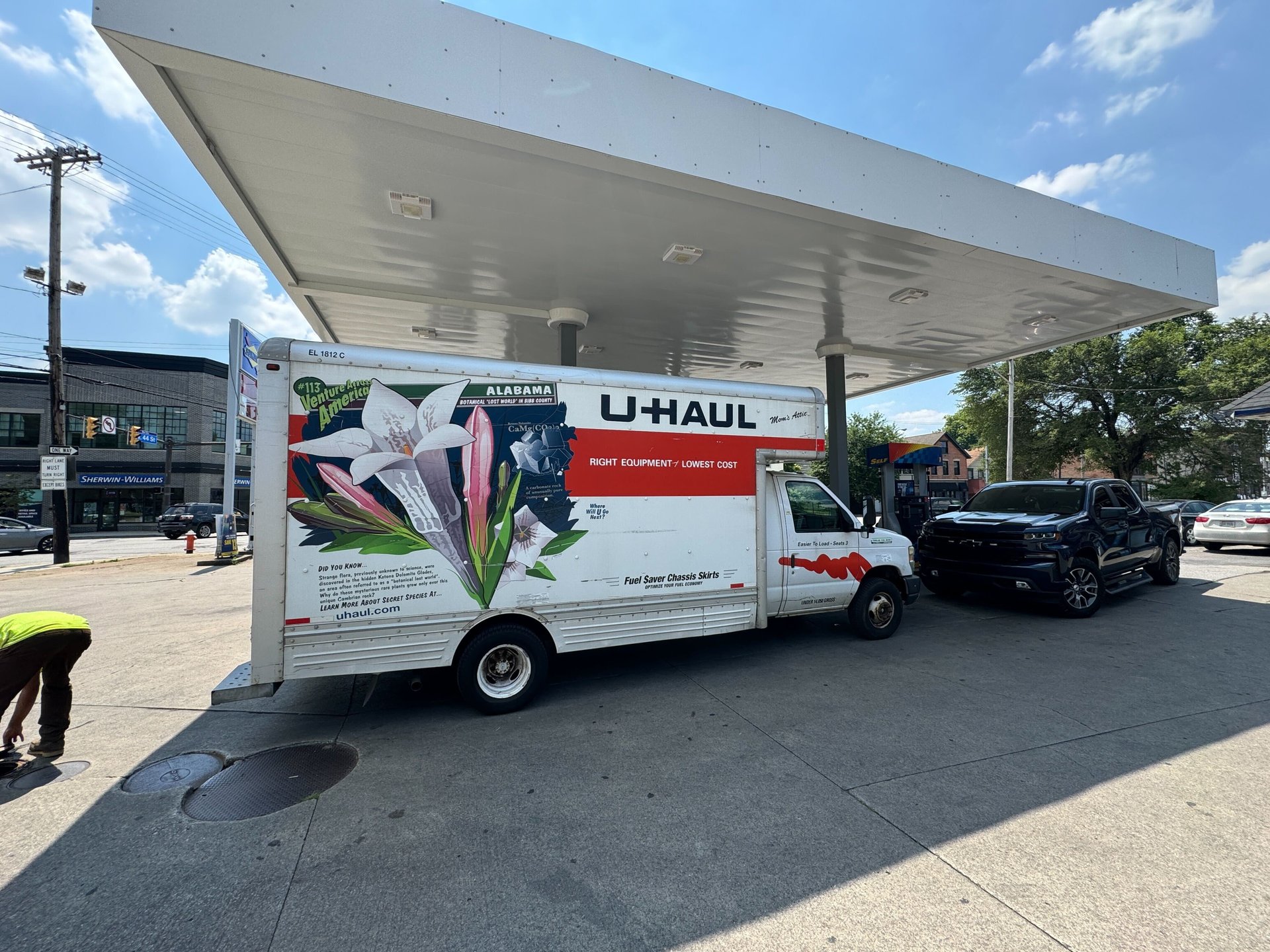
This all came to a head for me when I rented a big U-Haul box truck last week to move my house across town. After finishing the move I stopped at a gas station to replenish the 15 miles worth of gasoline I’d used in the big 200,000-mile Ford E-series in order to return it and not get dinged for fuel. I put four gallons in it just to be safe, and went to start it up, but nothing happened. I got lights on the dash and a single underwhelming click when I turned the key, but it didn’t even try to turn over the engine.
U-Haul sent out a professional roadside assistance person to help me. To her credit, she was very nice and was just doing her job, but I rolled my eyes when she pulled out the portable jump box and hooked it up. After seven attempts of shuffling the cable clips around and asking me to turn the key again, she gave up and said I would have to wait for her to go get a new battery and come back. Not wanting to sit at a gas station for an hour in 95-degree heat, I offered that a new battery definitely wouldn’t help. Her jump box was showing a full battery already and the starter wasn’t even engaging.
Thankfully I was able to convince her that the truck wouldn’t be fixed with a battery swap and she got a truck to tow it back to the yard while I took an Uber back to my car and asked the store manager to refund my rental fee for the inconvenience caused. I was certainly irritated, but nobody involved was at fault, so I didn’t go Karen mode on anyone, and still got what I wanted.
Jumper cables wouldn’t have helped here, and they won’t help you if you’re stuck on the side of the road. The best move is to just make sure you have an active and up-to-date AAA roadside assistance account if you’re going to drive clunkers like I do. That little silver card is worth its weight in gold.
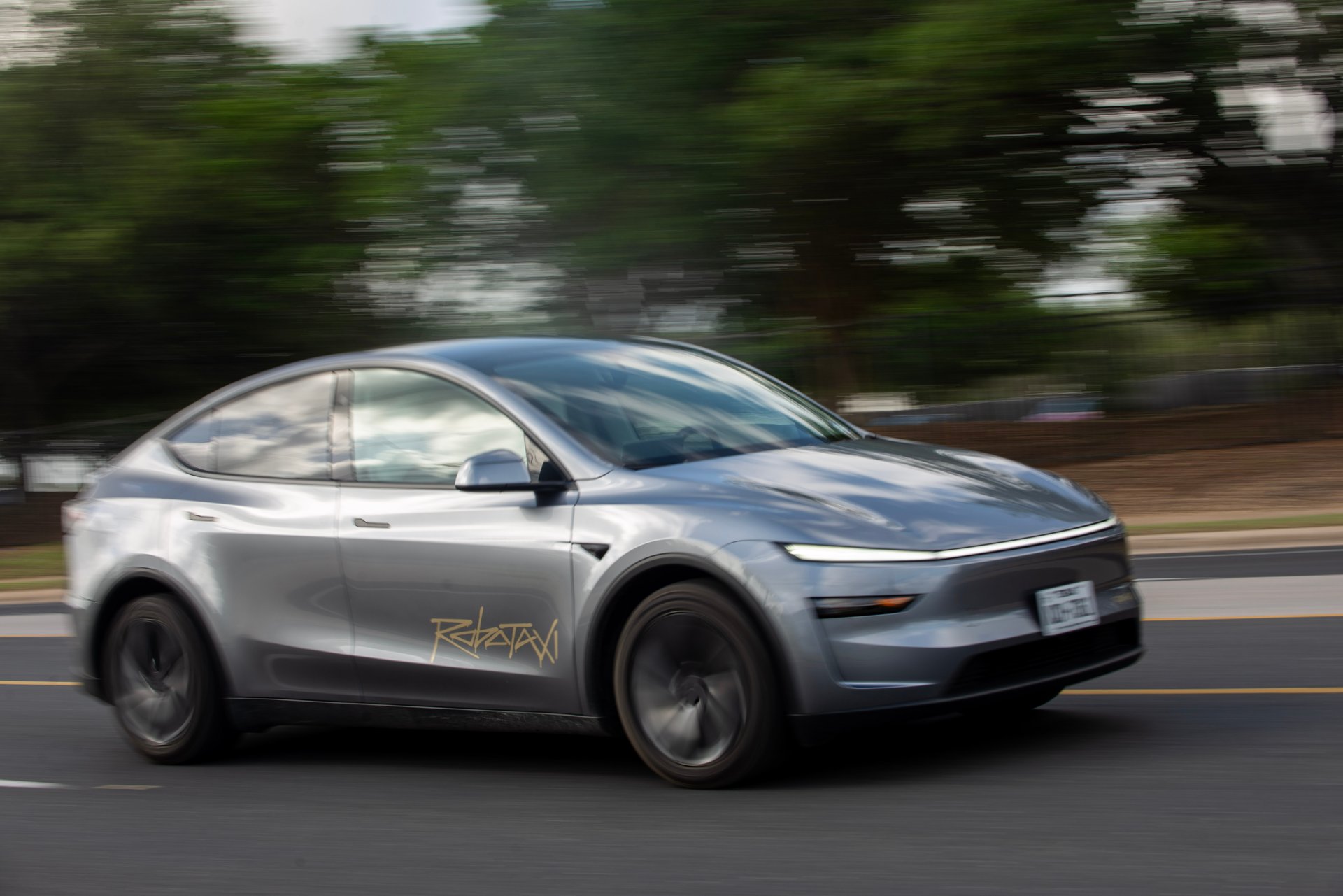
Good morning, Quartz readers!
Fare enough, Tesla. The company launched Elon Musk’s long-promised robotaxis over the weekend, and Wall Street’s reaction sent the company’s shares up around 10%.
Geopolitical whiplash. Markets are on edge after President Donald Trump ordered military strikes on three Iranian nuclear sites, and his move could have major short-term effects.
Trump tries to barrel through. He demanded “everyone” keep oil prices down after the U.S.’ attack, writing that people are “playing right into the hands of the enemy.”
Cured of red tape? Health insurance companies have pledged to streamline a controversial “prior authorization” process that some say has led to delays in medical treatments.
July could be a cut above. Another Fed governor has backed a July interest rate cut from the central bank if inflation from tariffs remains lower than expected (or “contained”).
Slim pickings. Novo Nordisk is ending its partnership with Hims & Hers because of “deceptive promotion and selling of illegitimate, knockoff versions” of its weight-loss drug Wegovy.
Tesla has always sold more than just cars — it has sold a story. And this weekend, Elon Musk tried to write the next chapter. After a rough year of sagging EV sales, thinning margins, and a CEO whose Twitter feed often outpaces his production line, Tesla is betting big on a new lane: robotaxis. Over the weekend in Austin, the company (finally) unveiled its first autonomous pilot — geofenced Model Ys, $4.20 fares (yes, really), and a babysitter in the front seat, just in case.
The robotaxis aren’t fully autonomous, widely deployed, or making money. But for Tesla, they’re mission-critical. A large chunk of Tesla’s valuation — up to 60%, by some estimates — hinges on Musk’s autonomous dream and Tesla’s AI future working. Eventually. At scale. For real. Robotaxis are no longer a side project — they’re the ultimate business model. And for a company whose market cap floats on more hype than horsepower, the pressure is... non-autonomous.
Shares surged after the launch, but analysts are split: Is this the future of transportation or just another glossy beta test wrapped in Silicon Valley optimism? If robotaxis work, Tesla becomes a mobility-as-a-service juggernaut, and if autonomy scales, Tesla goes from carmaker to platform. If not, it’s just a car company with an expensive CEO and aging models that’s stuck pushing deeply discounted EVs in a crowded market with cooling hype and shrinking profits. Meanwhile, competitors such as Waymo and Zoox are already in the fast lane, running actual driverless fleets with more polish and fewer PR flames.
The big question isn’t, “Can the robotaxi drive itself?” It’s “Can it drive Tesla’s future?” Either way, one thing’s clear: The driver may be optional, but the stakes are not. Quartz’s Shannon Carroll has more on why the robotaxi isn’t just a ride — it’s a rescue mission.
The Strait of Hormuz might be narrow, but its geopolitical significance is anything but. In the wake of U.S. involvement in the Israel-Iran war, a dangerous non-nuclear card is back on Iran’s table: closing the Strait of Hormuz, the maritime artery through which one-fifth of the world’s oil flows.
If you forgot your high-school geography, the Strait of Hormuz is the 33-kilometer stretch of ocean between the Persian Gulf and the Arabian Sea. It also happens to be the jugular of the global oil trade. If traffic there stops, the economic whiplash could be severe. Oil prices, currently hovering around a relatively tame $70 a barrel, could shoot up to $120, according to analysts at JPMorgan and ING. That means more than just pain at the pump — it could mean inflation revival, skyrocketing shipping costs, and a trickle-down economic migraine that doesn’t trickle so much as flood.
The Iranian parliament has already greenlit a blockade. The final call, however, lies with Iran’s Supreme National Security Council. Militarily, Iran doesn’t have the muscle to fully close the Strait (the U.S. Fifth Fleet is parked right there), but the country does reportedly have 27 submarines, an arsenal of sea mines, and anti-ship cruise missiles. In short, Iran can’t shut the door, but it can make enough noise to shake global oil prices.
Iran, of course, would suffer, too. Blocking the Strait would likely cut off its revenue pipeline and alienate its biggest customer: China, which buys up to 90% of its oil. U.S. officials have said closing the Strait would be “economic suicide.” Secretary of State Marco Rubio even tried to outsource the pressure to Beijing, warning that a blockade would tank China’s economy “a lot worse than ours.” He warned Iran that such a move “would be a massive escalation that would merit a response not just by us — but from others.”
Whether Iran is bluffing or serious remains the million-barrel question — but in a region already reeling from violence, this could be the spark that ignites something far larger. Quartz’s Michael Barclay has more on the geopolitics of narrow waterways and the wide-scale consequences.
✈️ JetBlue will suspend all service to and from Miami starting in September
📦 Here’s everything you need to know about Amazon’s coming Prime Day(s)
🏡 These 9 metro areas have the fastest-growing U.S. home prices
Our best wishes on a safe start to the day. Send any news, comments, and more to [email protected].
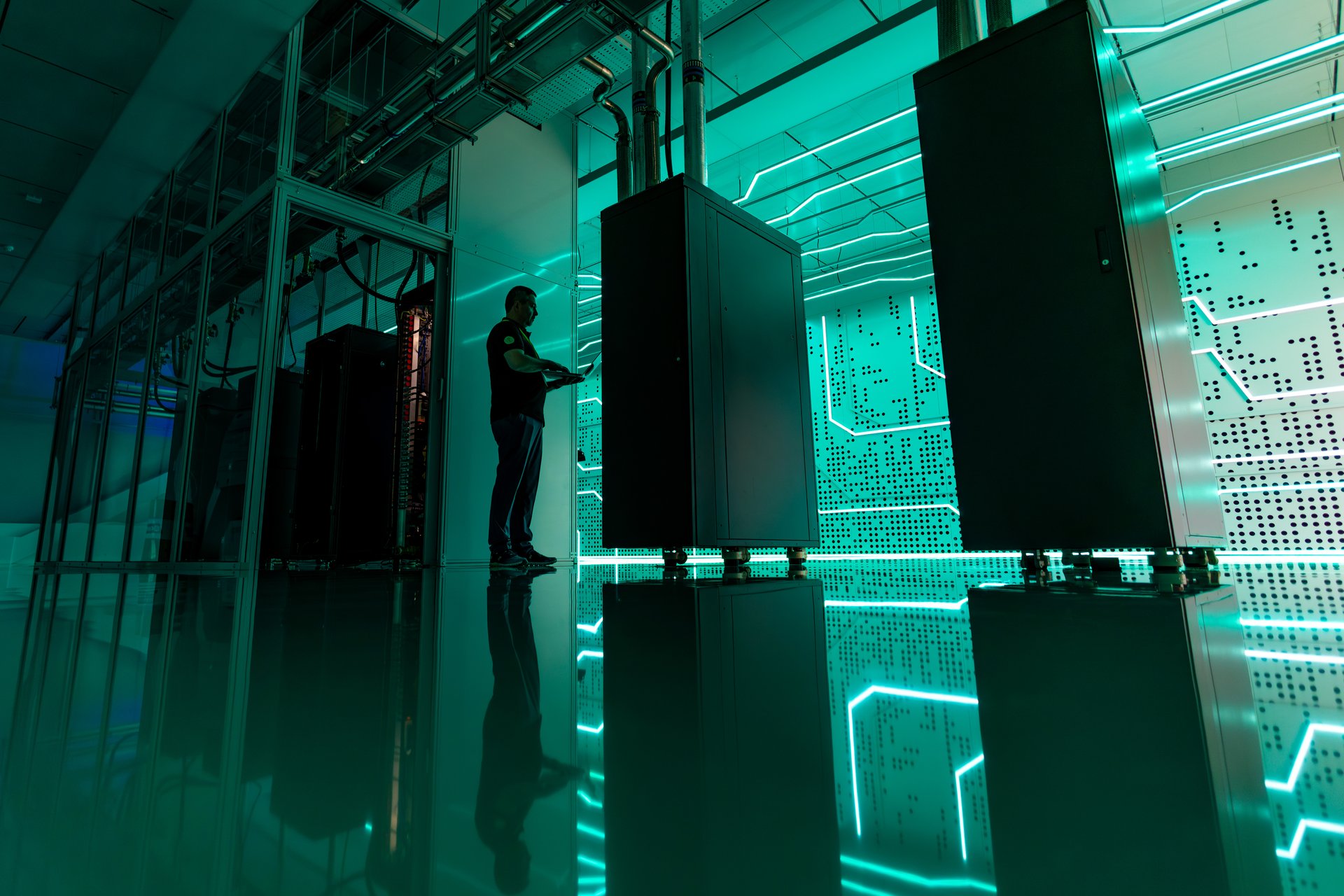
While there is plenty of focus on what tech giants are spending on AI data centers this year, companies also need to think much further ahead
The electricity demands of AI data centers are set to explode over the next decade, surging from 4 gigawatts today to 123 gigawatts by 2035, new Deloitte research shows.
That thirtyfold increase won't happen without major hurdles. The report identifies seven critical gaps in AI infrastructure development that the firm says could constrain the technology's growth if not addressed.
The biggest challenge is timing. While data centers can be built in a year or two, gas power plant projects that haven't already contracted equipment aren't expected to become available until the 2030s, according to the report. Some regions are experiencing seven-year waits for new grid connections, while utilities ordering necessary grid technology today, such as combustion turbines, won't receive them until 2029.
While there is plenty of focus on what tech giants are spending on AI data centers this year, companies also need to think much further ahead, said Kelly Marchese, a Deloitte infrastructure leader and a co-author of the report. "When our clients are looking to make an investment, it's not a short-term horizon," she said. "These are major investments that require planning well beyond just a few years."
The long timeline becomes even more critical in light of other constraints. The industry also faces a severe labor crunch, with 63% of data center executives citing skilled worker shortages as a top challenge. Competition with other industries for workers is intensifying as companies race to build infrastructure, creating what the report calls a "top challenge" for the sector.
Perhaps most concerning is the lack of cooperation between data center operators and power companies. Only 15% of data center executives and 8% of power company executives describe their partnerships as "highly effective," despite 72% of both groups viewing power and grid capacity constraints as very or extremely challenging.
Supply chain bottlenecks are contributing to delays, with construction material costs having increased by 40% over the past five years. Critical components for power infrastructure are still subject to tariffs and import dependencies, potentially slowing the buildout further.
To overcome these challenges, massive investments are already planned. Electric and gas utilities are expected to spend more than $1 trillion over the next five years, while hyperscalers could hit that same trillion-dollar threshold in just three years. The tech industry is also planning to invest more than $1 trillion in U.S. manufacturing of AI supercomputers, chips, and servers over the next four years alone.
Meanwhile, data centers are already straining the power grid, with some facilities consuming as much electricity as hundreds of thousands of homes, and utilities charging millions just to study whether they can handle new connections. With such massive buildouts planned, the industry is scrambling to find efficiencies wherever possible.
The challenges don't stop there. Deloitte identified several other infrastructure bottlenecks complicating the AI buildout. Cybersecurity concerns are mounting as AI data centers become more vulnerable to supply chain attacks, with hackers potentially targeting everything from servers to cooling equipment.
The pace of development is outpacing regulators' ability to keep up, according to Marchese, with the report noting that regulatory delays are also slowing progress. Environmental impact statements, for instance, take more than two years to complete, while state-level restrictions on renewable projects have more than doubled over the past year.
Even natural gas infrastructure is strained, with many top data center markets facing constrained pipeline capacity despite plans for more than 99 gigawatts of new gas-fired power plants across 38 states.
It's not all bad news, though. The report suggests AI itself could help solve some of these infrastructure challenges. Eighty-three percent of respondents expect grid-enhancing technologies to play an increasing role in meeting data center energy demands through 2035. The technology could also enable more flexible data center operations — 68% of industry executives believe data center demand flexibility will become an acceptable tradeoff to secure faster grid connections.
Out of the crisis, though, something new may emerge. Industries that traditionally operated in silos are being forced to work together in unprecedented ways that could reshape how major infrastructure gets built in the future. "Utilities and hyperscalers are having to solve some of these problems together," Marchese said. "It could create a different type of innovation."

Good morning, Quartz readers!
SPONSORED BY KANTAR
Coming this week: Earnings from FedEx, Micron, Walgreens, and Nike; the PCE inflation gauge; and congressional testimony from Fed Chair Jerome Powell.
Lowered expectations. A Federal Reserve governor has argued for an interest rate cut — “as early as July” — because he doesn’t expect a tariff-induced inflation spike to stick around.
Trumped by the fine print. A Senate official has ruled that the president’s “big, beautiful” tax bill can’t defund regulators such as the Consumer Financial Protection Bureau.
Tesla’s power play. The company just inked a $550-plus-million deal with China to build its first grid-scale battery plant (in Shanghai), continuing the car company’s lofty ambitions.
Mission: Implausible? Elon Musk’s Starship rocket had another huge failure — exploding before it was even launched — in the latest setback for SpaceX’s Mars-bound ambitions.
Big Blue skies ahead. IBM got a price target hike, with analysts saying the company is in the “early stages of a renaissance of growth” thanks to AI, quantum, and the cloud.
Deus ex machina. At a conference on AI’s future, Pope Leo XIV said there should be serious reflection on “the inherently ethical dimension of AI, as well as its responsible governance.”
SPONSOR CONTENT BY KANTAR
 2.png)
AI is revolutionising marketing, but what about innovation, a space where human curiosity and creativity have always led the way?
In today’s evolving landscape, brands that fail to harness the power of AI—or lack the right expertise and data to do so—risk falling behind. This insightful booklet explores the powerful potential of AI and your innovation process, when applied in the right way.
Once allergic to military work, Silicon Valley is now deploying itself to the front lines. Executives from OpenAI, Meta, and Palantir will be sworn in this week as Army Reserve officers — uniforms and all — while their companies ink billion-dollar defense contracts, build AI combat goggles, and help shape Pentagon strategy.
Meta is collaborating with Anduril to produce augmented reality headsets for soldiers. OpenAI just landed a $200 million military contract. And with President Donald Trump pushing a proposed $1 trillion defense budget, the rush to weaponize consumer AI is no longer theoretical — it’s the business model.
The shift marks a stunning reversal.
Just a few years ago, employees at Google walked out over Pentagon partnerships. Now, the economic reality of building advanced AI — which costs hundreds of millions to train and operate — is making military dollars not just attractive, but necessary. Alongside the government money, though, come eroded safety guardrails and thinning oversight: OpenAI and Google have quietly walked back restrictions on military uses, and the Pentagon has slashed its independent weapons testing staff by more than 50%.
It’s a historic full-circle moment: The internet began as a Pentagon project, and now the platforms it birthed are being reabsorbed into the war machine. Now, the next generation of warfare may be shaped by the same companies that shaped your newsfeed. Quartz’s Jackie Snow has more on the tech bros going tactical.
Less than 25,000 pounds of freeze-dried hormones have tipped America’s trade balance with Ireland into eyebrow-raising territory.
Thanks to surging demand for weight-loss drugs such as Mounjaro and Zepbound, those powdered peptides carry a combined price tag of $36 billion. That’s enough to make Ireland the U.S.’s second-largest goods trade deficit partner, trailing only China. And that number has the White House seeing red (and green).
The drugs, mostly manufactured in Ireland and bound for Eli Lilly’s Indiana headquarters, have been flooding in as companies scramble to stockpile ingredients ahead of Trump’s ever-looming tariffs. The kicker? That stockpiling helped inflate the very trade deficit Trump is now using to justify a fresh round of tariffs under a revived Section 232 investigation.
It’s a pharmaceutical ouroboros: Trump’s protectionist policies set off a buying spree that widened the deficit he now blames on… everyone else.
The Trump administration’s stated goal is to bring drug manufacturing back to U.S. soil — but building advanced pharma capacity isn’t as simple as flipping a switch. Ireland has spent decades becoming the world’s pill factory, with tax incentives, talent, and tight regulatory control that make it nearly irreplaceable in the short term.
The result? A bizarre geopolitical collision between obesity, supply chains, and freeze-dried GLP-1 analogs — all now central to one of the most absurd trade spats in modern memory. Quartz’s Catherine Baab has more on the geopolitical side effects of weight-loss drugs.
SPONSOR CONTENT BY KANTAR
 2.png)
AI is revolutionising marketing, but what about innovation, a space where human curiosity and creativity have always led the way?
In today’s evolving landscape, brands that fail to harness the power of AI—or lack the right expertise and data to do so—risk falling behind. This insightful booklet explores the powerful potential of AI and your innovation process, when applied in the right way.
🔍 Google has proposed a search fix to hold off fines from the EU
🦆 Aflac was hacked by a cybercrime gang that targets insurance companies
🤑 Telegram’s CEO says he’ll leave his fortune to his 100-plus kids
😬 These states are where Americans are most delinquent on their debt
🚗 Here are the best and worst car brands, according to Consumer Reports
⚽ How FIFA’s $1 billion prize money for the Club World Cup stacks up
Our best wishes on a safe start to the day. Send any news, comments, and more to [email protected].
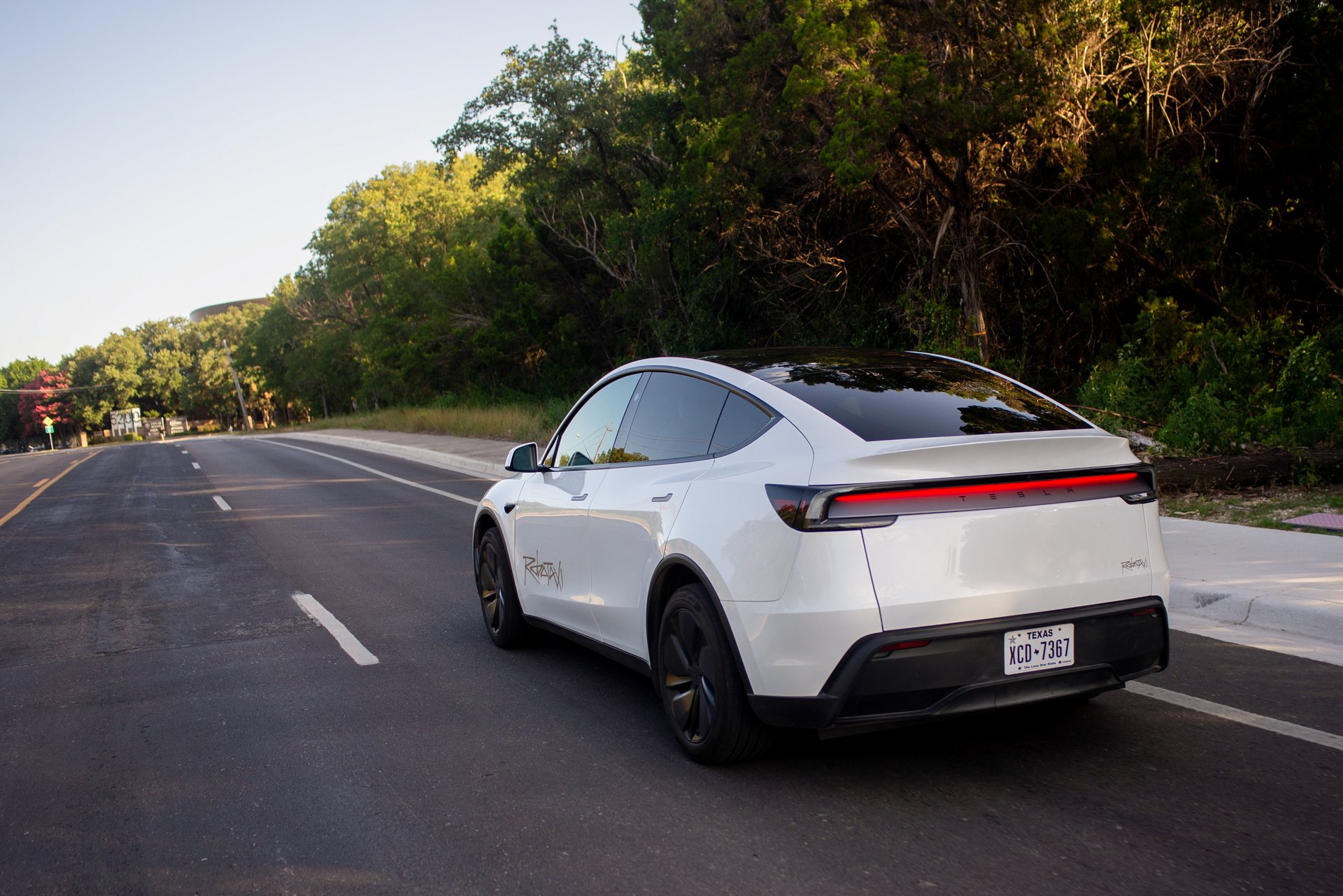
After a brutal start to 2025, Tesla is turning to long-promised autonomy to revive growth, margins — and magic. But investors won't wait forever
Tesla needs a win.
After a bruising year marked by slowing EV sales, shrinking margins, and a CEO whose personal brand is increasingly overshadowing his company’s, the once-unstoppable EV-maker has found itself in unfamiliar territory: vulnerable. Tesla, for years considered a category-defining disruptor, now looks a lot more like a legacy car company with a very modern PR problem.
So when Elon Musk unveiled Tesla’s first robotaxi pilot in Austin, Texas, over the weekend — complete with human safety monitors, geofenced routes, and a wink at meme culture with a $4.20 fare — it wasn’t just another headline-generating Musk stunt. It was a signal flare. The handful of driverless-ish Model Ys zipping through a small part of Texas may seem like a modest rollout, but for Tesla, they represent something far bigger: a bet that autonomous driving can do what EVs no longer reliably can — drive growth, justify a sky-high valuation, and restore some of the tech-world magic Musk once had at his fingertips.
In other words, the robotaxi rollout isn’t just a pilot. It’s a pivot.
The urgency behind the move is rooted in Tesla’s eroding fundamentals. The company is still selling cars, but the red-hot demand that once made every new Tesla a cultural moment has cooled. In China — Tesla’s most important international market — deliveries dropped 17% in April year-over-year. In the U.S., registrations fell by 16% in the same month. And in Europe, the company saw double-digit sales declines in key markets such as France, Sweden, and the Netherlands, with some sales plunging as much as 81%.
The broader EV market isn’t collapsing, but it’s maturing, and competition is intensifying. Chinese manufacturers such as BYD are flooding the market with cheaper — and potentially better — alternatives, while Western automakers are catching up with well-priced hybrids and new electric entries. Tesla’s lead, once considered unassailable, is shrinking. Fast.
Margins are following suit.
Tesla’s fiscal first-quarter automotive gross margin came in around 16% — well below its pandemic-era peak of 25% — despite aggressive price cuts and zero-interest financing promotions. The deals have helped volume, but they’ve come at the cost of profitability, and some analysts have grown skeptical.
Meanwhile, the brand’s cultural cachet has taken a hit. Musk’s increasingly polarizing persona — amplified by his social media behavior and political alliances (and feuds) — has alienated some consumers and investors. In parts of Europe, Tesla has become a flashpoint for protests. In Sweden, workers rallied against Tesla over its refusal to sign collective bargaining agreements. In Germany, climate activists targeted the company’s Gigafactory. Musk’s proximity to far-right politics hasn’t helped, either, turning what was once an apolitical tech brand into a lightning rod for controversy.
All of that has left Tesla in an unusual position: still enormous, but no longer ascendant. And as its once-generous margins narrow and its vehicle lineup ages, Tesla needs more than incremental improvement. It needs a second act.
Enter robotaxis.
For close to a decade, Musk has pitched autonomy as Tesla’s inevitable evolution: a world where every Tesla on the road doubles as a revenue-generating, self-driving taxi. Tesla’s Full Self-Driving (FSD) software is already a central piece of this puzzle. Musk has sold investors on a vision of a fully autonomous Tesla fleet that could turn every parked car into a revenue-generating asset. Sold for $12,000 up front or $220 per month, FSD has been pitched as both a near-term driver-assistance system and a long-term autonomy platform. But it’s the latter use case — driverless Tesla robotaxis dispatched through an Uber-style network — that investors are increasingly focused on.
To outsiders, the robotaxi launch — limited in scope, monitored by humans, and nowhere near full autonomy — may seem underwhelming. But internally and among investors, it represents a critical test of Tesla’s ability to shift its business model. If autonomy can be proven at scale, it could unlock a high-margin revenue stream that doesn’t rely on new car sales or expensive manufacturing cycles.
According to a Sunday note from RBC Capital Markets, Tesla’s robotaxi efforts represent about 60% of Tesla’s long-term valuation model. And analyst Tom Narayan said in a November note that “robotaxis account for 44% of [Tesla’s] valuation,” adding that “FSD accounts for another 33% of our valuation.”
Narayan said in the more recent note that the launch itself was “widely expected” to be a small-scale pilot using Model Ys in a geofenced zone and said that, from conversations with investors, “feedback has been mostly neutral.” The key, Narayan said, is whether Tesla can prove that a vision-only, camera-based system — without lidar, radar, or high-definition mapping — can work at scale. If it can, the economics could be transformative.
“Our modeling does not assume Tesla has dominant market share in any region,” Narayan wrote. “As such, there could be further upside should the company show it can do this.”
Morgan Stanley analyst Adam Jonas has projected that Tesla could eventually run a network of 7.5 million autonomous vehicles, each generating recurring revenue. Wedbush analyst Dan Ives has called the robotaxi opportunity a potential trillion-dollar market cap addition over time. He wrote in a Sunday note — where he raved about his experience in a robotaxi — that the launch is the beginning of a “golden age” for Tesla.
Grand View Research has suggested that the global autonomous ride-hailing market could reach close to $100 billion by 2030, and MarketsandMarkets has estimated that the robotaxi segment alone will reach over $45 billion by 2030. If Tesla captures even a fraction of that — and can do so with lower costs and higher margins than its rivals — the upside is massive.
But that’s a big if.
Despite some investor excitement, skepticism remains.
UBS recently cut its price target on Tesla (to $215), warning that the robotaxi opportunity “is already priced into the stock.” Guggenheim analyst Ronald Jewsikow described Sunday’s launch as “a relatively uneventful Sunday in Austin, and uneventful is a good outcome.” In a Monday note, he wrote: “Based on our analysis of publicly available videos from the influencer community, the day was filled with almost entirely clean driving performance.” He kept his “Sell” rating and $175 price target, citing valuation.
Baird, a typically Tesla-friendly firm, warned that Musk’s timelines on scaling may be “a bit too optimistic.” And while Wedbush sees the robotaxi pivot as the start of a massive market shift, others are concerned about how quickly Tesla can navigate technical, regulatory, and reputational hurdles; the company’s stock is vulnerable to any sign that autonomy is slipping further down the road. Fairlead Strategies’ Katie Stockton told Barron’s that Tesla has strong support around $300 but upside resistance near $370-$380 — and the market could treat the robotaxi rollout as a “sell-the-news” moment if momentum stalls.
This disagreement isn’t academic. It’s urgent.
If Tesla fails to turn its autonomy promise into a scalable business, much of the company’s valuation could evaporate. The robotaxi story isn’t a side narrative. It’s the centerpiece. Without robotaxis and FSD, Tesla’s market cap would likely fall back in line with traditional automakers — most of whom trade at far lower earnings multiples.
The Austin pilot, for all the fanfare, is still more of a statement than a solution. Musk hailed it on X as the “culmination of a decade of hard work,” but realistically, it’s just a down-payment on a vision. Meanwhile, Tesla still trails rivals in real-world autonomous deployment, and the competition is cruising ahead.
Waymo’s fully driverless robotaxis already operate in parts of Phoenix, San Francisco, and Los Angeles, with no human monitors and millions of real-world miles under their belt. Zoox is testing purpose-built vehicles with no steering wheel at all. Cruise, GM’s self-driving unit, is rebooting after a string of safety scandals but plans to return to the streets later this year. Compared with these players, Tesla’s Model Y robotaxis — with a front-seat babysitter — look a little bit more like a beta test than a breakthrough.
Then, there’s the regulatory landscape that Tesla faces. Texas, which has friendlier regulatory laws, still plans to introduce AV permit rules by September 1. Federal regulators at NHTSA are reviewing crash data linked to Tesla’s FSD features. Insurance underwriting, municipal permitting, and legal liability frameworks all remain in flux. Autonomy isn’t just a technical problem, it’s a political and legal one.
For all of Tesla’s experimentation — solar roofs, humanoid robots, energy storage — the company’s financial engine remains its cars. And that engine is sputtering. The Model 3 and Y are aging. The S and X are niche. The Cybertruck, while headline-grabbing, is unlikely to scale meaningfully in the near term. Tesla’s energy business is growing, but it still represents a small fraction of total revenue. Optimus, the humanoid robot, remains a speculative long-term project.
What Tesla needs isn’t another model. It needs a platform — a scalable, recurring revenue business that justifies its premium multiple and restores the “tech stock” aura it once enjoyed. Robotaxis, if they work and can scale quickly enough, fit that brief. They could transform Tesla’s hardware into high-margin software platforms, monetized not just through car sales but through services, subscriptions, and mobility-as-a-service infrastructure.
The market seems to understand what’s at stake.
Tesla shares jumped close to 10% on Monday, adding roughly $100 billion in market value in a single day. But behind the enthusiasm is a more sobering reality: Tesla’s valuation rests heavily on a bet that has yet to pay off.
As Paul Marino, chief revenue officer at GraniteShares, told Reuters last year: “AI and robotaxi is such a huge opportunity over the next two, three, five years. So if you’re a long‑term believer, you’re going to take the margins like your medicine.” That’s essentially Tesla’s pitch to investors now: Endure the short-term pain, believe in the vision, and wait for the margins to come roaring back — powered not by steel and lithium but by software.
If Tesla can scale autonomous rides, regulators nod, users pay, and revenue flows. If not, Tesla remains an overvalued EV maker watching margins vanish. For now, dots remain unconnected. Can robotaxis move from geofenced pilots to grid-wide fleets? Will revenues grow enough to free Tesla from discount-driven EV sales? Does the AI hypothesis outweigh execution?
In a few quarters, this question will likely no longer be theoretical.
Tesla’s valuation hinges on whether robotaxis evolve from press releases into real money-making machines. The launch may not have changed the way people move (yet), but the robotaxis will continue to shape how investors view the company’s future. Whether the robotaxi gamble pays off won’t just depend on how far these vehicles can drive — but whether they can carry Tesla’s financial future with them.

Fed Governor Michelle Bowman said tariffs haven't provoked a sustained spike in prices and there's been less volatility than many economists feared
A top Federal Reserve official said Monday that she believes the central bank should cut interest rates next month if inflation from tariffs remains lower than expected.
"Should inflation pressures remain contained, I would support lowering the policy rate as soon as our next meeting in order to bring it closer to its neutral setting and to sustain a healthy labor market," Federal Reserve Governor Michelle Bowman said in prepared remarks delivered in Prague.
Bowman, a vice chair of supervision at the Fed's Board of Governors, said the trade wars haven't provoked a sustained spike in prices and there's been less volatility than many economists initially feared.
"All considered, ongoing progress on trade and tariff negotiations has led to an economic environment that is now demonstrably less risky," she said.
She joined Christopher Wallen, another Fed governor, in backing lower interest rates next month if tariffs don't spark another round of inflation. So far, tariffs imposed by President Donald Trump have had a muted effect on consumer prices.
"I don’t think we need to wait much longer, because even if the tariffs come in later, the impacts are still the same," Waller said on CNBC last week. "It should be a one-off level effect and not cause persistent inflation.”
Others endorse the Fed sitting tight to keep a stronger lid on prices. That illustrates a split among central bank officials over how to respond to Trump's tariffs, as he escalates his attacks against the Fed. The next meeting of the 12-member Federal Open Market Committee tasked with setting interest rates will be held July 29-30.
Trump has waged a public campaign against Fed Chair Jerome Powell, arguing that the central bank should cut interest rates to help fortify the U.S. economy and finance its debt. He also mused about unseating Powell and installing himself as Fed Chair in a display of his anger at the central bank.
“I don’t know why the Board doesn’t override this Total and Complete Moron!” said Trump in a Friday social media post.
There are signs that Trump's offensive is broadening. Both Federal Housing Finance Agency Director Bill Pulte and Commerce Secretary Howard Lutnick sided with the president in attacking Powell last week.
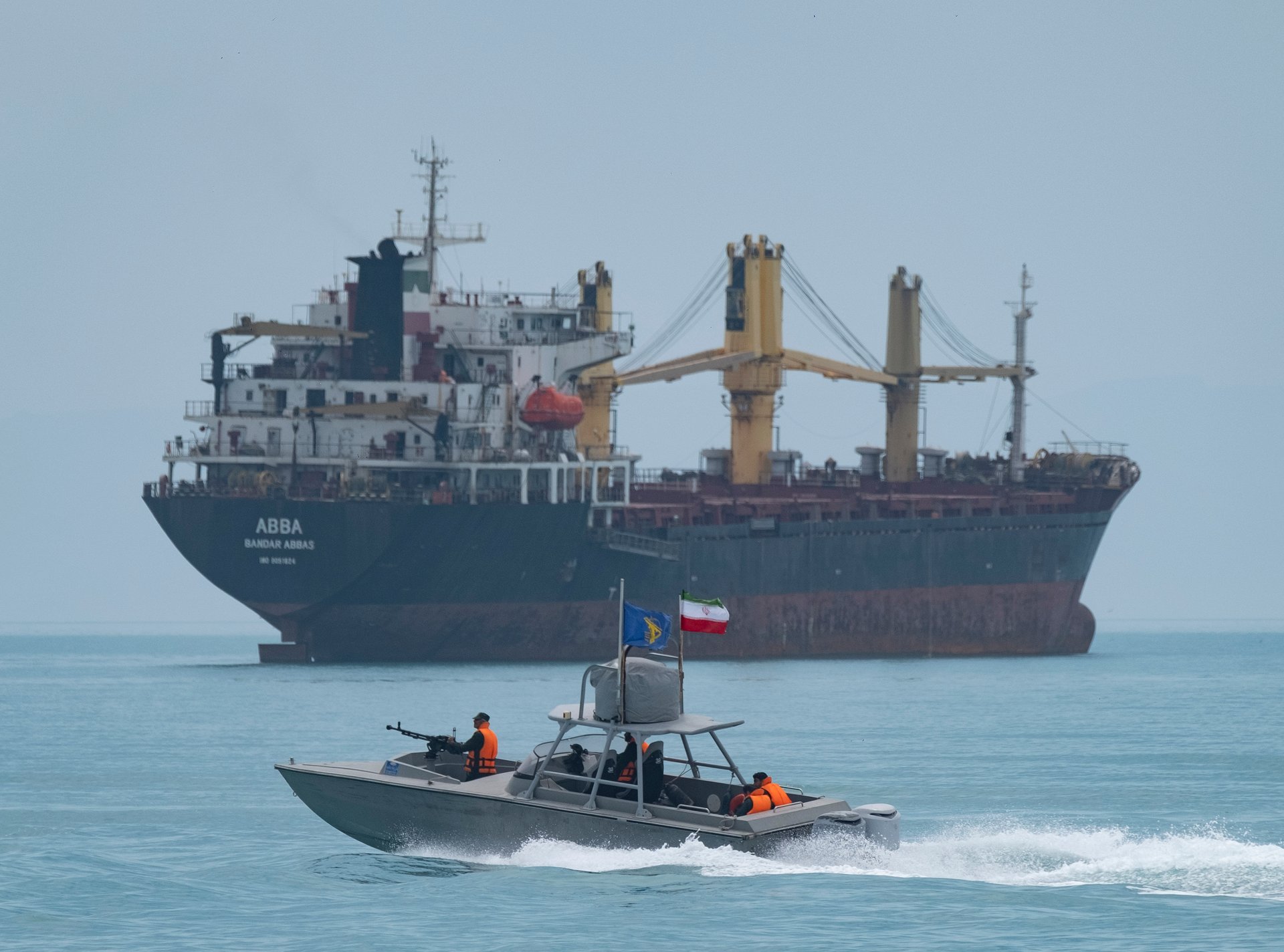
The U.S. attack on Iran has raised fears about a blockade in the Strait of Hormuz. Here's what to know
Now that the U.S. has entered the Israel-Iran conflict, Iran has one non-nuclear option that could cripple the world economy: blocking the Strait of Hormuz. The move would devastate Iran itself economically, as well as its immediate neighbors.
One-fifth of global oil — and one-third of all seaborne oil — is shipped through the narrow maritime passage. If traffic there grinds to a halt, it would inflate prices not just for gas but for most transnational goods.
Here's what you need to know.
The Strait of Hormuz connects the Persian Gulf to the Arabian Sea — and, by extension, the world — through the Indian Ocean. It’s responsible for one-third of global seaborne oil, from Iran, Iraq, Kuwait, Bahrain, Qatar, and the UAE, all of which have coastline on the Persian Gulf.
Saudi Arabia ships six million barrels of crude a day through the Hormuz; the bicoastal country also has access to the Red Sea, and has built a pipeline to divert crude if necessary.
The Hormuz strait is only 33 kilometres wide at its narrowest point, and has eight islands: Iran controls seven of them, on which it has a military presence. Hormuz is marginally larger than the Bab-el-Mandeb (“Gate of Grief”), connecting the Red Sea to the Indian Ocean, which is only 26 kilometres wide at its narrowest.
For the last year, oil prices have been in the range of $60 to $75 a barrel.
Analysts at both JPMorgan and ING predict a blockade would bump prices by $120 a barrel, effectively tripling the price.
This might not be in Iran’s strategic interest to do so — particularly due to the risk of angering its biggest customer, China, which buys anywhere between 75% to 90% of Iran’s oil.
The Iranian parliament has endorsed a blockade, but a final decision rests with Iran’s supreme national security council.
Iran has threatened to block Hormuz in the past, most recently in 2018 after President Donald Trump ripped up the nuclear deal and reimposed sanctions. There was also a threat in 2011, in response to sanctions related to nuclear talks. At that point, the Obama administration told Iran it would consider a Hormuz blockade to be an act of war.
Iran does not likely have the naval capacity to block the strait outright, especially with the Persian Gulf presence of the U.S. Fifth Fleet. But Iran could make passage very difficult: It reportedly has 27 submarines, anti-ship cruise missiles, and an arsenal of 6,000 mines.
An Iranian surrender is highly unlikely, as is the resumption of negotiations, and so all bets are off as to what happens next. One international analyst told the Wall Street Journal that Iran’s military options range from “poor to disastrous.”
Both Vice President J.D. Vance and Secretary of State Marco Rubio called the idea of closing the Strait of Hormuz “economic suicide” for Iran. Rubio called on China to intervene, and told Fox News that blocking the strait "would hurt other countries’ economies a lot worse than ours." He added, "It would be a massive escalation that would merit a response not just by us but from others.”
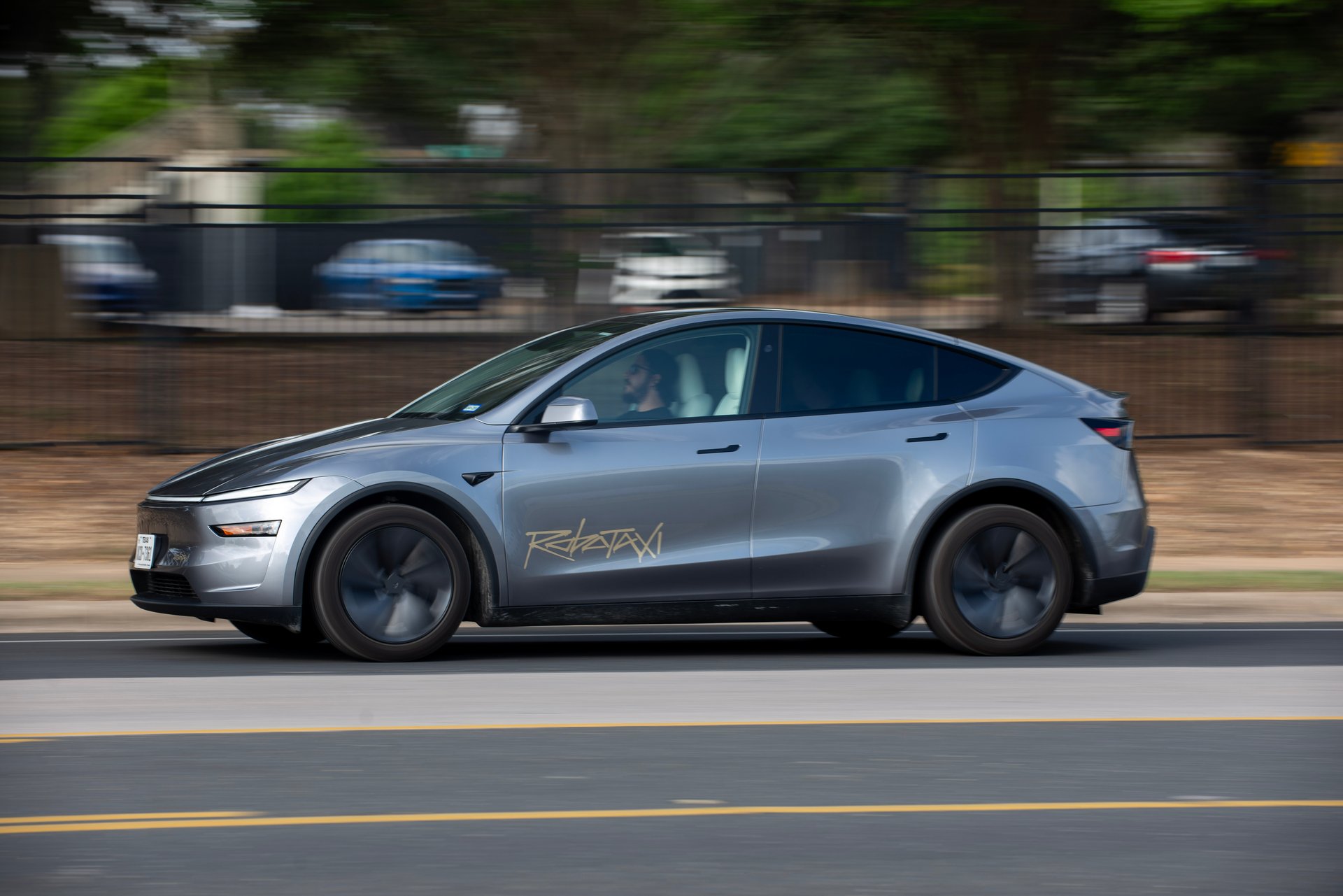
Tesla finally turned the key on its decade-in-the-making robotaxi service this weekend, and Elon Musk’s autonomous dream got real
After years of ambitious promises and moving goalposts, Tesla finally turned the key on its decade-in-the-making robotaxi service this weekend, and Elon Musk’s autonomous dream got real — sort of. There’s no Cybercab. No nationwide launch. And certainly no fully autonomous fleet humming through city streets, unbothered by traffic or regulation.
But Wall Street didn’t seem to care. Tesla stock surged almost 9% in Monday afternoon trading — a welcome boost for the automaker, even as the stock remains down 8.8% year to date.
Behind the bump was a quietly executed, relatively successful soft launch of Tesla’s long-awaited ride-hailing service in Austin, Texas. A fleet of 10 to 20 camera-only Model Ys began operating over the weekend within a tightly geofenced 10-square-mile zone. The service charges a flat $4.20 per trip (yes, really), available exclusively to a handpicked group of influencers and Tesla diehards. Each ride comes with a Tesla safety monitor riding shotgun, a remote operator on standby, and a gentle reminder: Truly driverless Teslas are still a vision in progress.
The rollout wasn’t the robo-revolution Musk once teased, but it wasn’t nothing, either. The debut was as uneventful as Tesla probably hoped: no crashes, no viral disengagements, no dramatic footage — just a handful of smooth, influencer-captured rides that looked indistinguishable from an Uber.
“Super congratulations to the Tesla AI software and chip design teams on a successful robotaxi launch!!” Musk posted on X, calling it the “culmination of a decade of hard work.” He emphasized that both the chip and software teams were built entirely in-house — one reason Tesla claims its approach can scale faster and cheaper than lidar-heavy competition such as Waymo and Zoox.
On the surface, Tesla’s launch was a win. But underneath all the noise, Wall Street is still deciding what exactly Tesla just proved — and whether it moves the needle at all.
The initial reactions were positive, if a bit curated. “This is the future,” wrote Wedbush analyst Dan Ives in a note. Others trip-takers described the rides as “smooth,” “great,” and “normal.” Bearded Tesla Guy described the app’s interface as “basically Uber” — although the service has been upgraded: Inside the robotaxis, passengers are greeted with personalized entertainment options built into Tesla’s app, including Spotify, Netflix, and Disney+.
But if the execution felt more like a proof-of-concept than a revolution, Wall Street wasn’t particularly rattled. “From our conversations with investors, feedback has been mostly neutral,” RBC Capital Markets analyst Tom Narayan said in a post-launch report, noting that expectations were already set for a geofenced Model Y rollout.
UBS analyst Joseph Spak bumped his price target to $215 from $190 but kept a “Sell” rating, writing, “The robotaxi opportunity… is already priced into shares.” Like many analysts, Spak sees the pilot as more of a long-tail thesis than a short-term catalyst.
Guggenheim analyst Ronald Jewsikow described Sunday’s launch as “a relatively uneventful Sunday in Austin, and uneventful is a good outcome.” In a Monday note, he wrote: “Based on our analysis of publicly available videos from the influencer community, the day was filled with almost entirely clean driving performance.” He kept his “Sell” rating and $175 price target, citing valuation.
Meanwhile, Tesla bull Ives, who attended the launch and took multiple rides, struck a predictably glowing tone. “Going into it, we expected to be impressed but walking away from it, all there is to say is that this is the future,” he wrote, calling it the beginning of Tesla’s “golden age” and reaffirming his “Outperform” rating and $500 price target. He added that the ride experience was “comfortable, safe, and personalized,” and praised Tesla’s vision-based system for handling narrow roads, traffic cones, and unpredictable human behavior.
Tesla’s current service operates within a mapped zone that excludes highways and airports, and the rides are available from 6 a.m. to midnight (weather permitting) and require safety monitors to verify rider identity and provide in-vehicle oversight. The company hasn’t said when — or whether — the service will be opened to the general public.
One major question hanging over Tesla’s plans: regulation. While Texas currently allows autonomous vehicle services without special permits, a law passed on June 22 — the same day as Tesla’s launch — will soon require companies to obtain approval from the Texas Department of Motor Vehicles before operating autonomous vehicles without a human driver. That rule takes effect on September 1 and could complicate any attempt by Tesla to scale its robotaxis.
For bulls, Tesla’s robotaxi strategy remains one of the company’s most important long-term bets. RBC Capital Markets has estimated that robotaxis could represent 60% of the company’s total valuation model — though it hasn’t assumed Tesla dominance in any particular regional market.
The bet is that Tesla’s vision-only, neural net-driven system will ultimately prove cheaper, more scalable, and more adaptable than any of the lidar- and radar-heavy approaches currently on the road. If Tesla’s approach works, the company could potentially activate autonomy features in its existing fleet via software updates, creating an on-demand robotaxi network without building new hardware from scratch.
Still, some analysts remain cautious.
Baird, a typically Tesla-friendly firm, warned that Musk’s timelines on scaling may be “a bit too optimistic.” And while Wedbush sees the robotaxi pivot as the start of a massive market shift, others are concerned about how quickly Tesla can navigate technical, regulatory, and reputational hurdles; the company’s stock is vulnerable to any sign that autonomy is slipping further down the road. Fairlead Strategies’ Katie Stockton told Barron’s that Tesla has strong support around $300 but upside resistance near $370-$380 — and the market could treat the robotaxi rollout as a “sell-the-news” moment if momentum stalls.
For now, the robotaxi rides in Austin appear to have gone off without major incident. Influencer videos posted over the weekend showed mostly uneventful trips: smooth braking, solid turns, no obvious errors. Riders were greeted by screens synced with their Tesla accounts and personalized entertainment options. Some noted long wait times for support, and others had difficulty locating their vehicles in real time — calling the experience “like Pokémon hunting.”
Behind the scenes, Tesla employees and engineers celebrated the launch with what appeared to be a live operations center monitoring camera feeds from dozens of vehicles. Ashok Elluswamy, head of Tesla’s Autopilot software, posted a photo of the team gathered in front of a bank of monitors on Sunday evening.
But even Musk has acknowledged the road ahead will be gradual. California, another key market, is expected to present a tougher regulatory path. And rivals aren’t waiting. Waymo currently operates more than 1,500 fully driverless vehicles across multiple U.S. cities, including Austin — with plans to expand to Washington D.C., Miami, and Atlanta in the coming year.
While Tesla didn’t launch a fully driverless future, it did put a version of it on the road. Whether this pilot is the beginning of a $2 trillion run or just another step in a long, slow climb depends on two things: whether Tesla’s AI-first, camera-only bet can actually work, and whether Wall Street is still willing to wait for it to pay off.
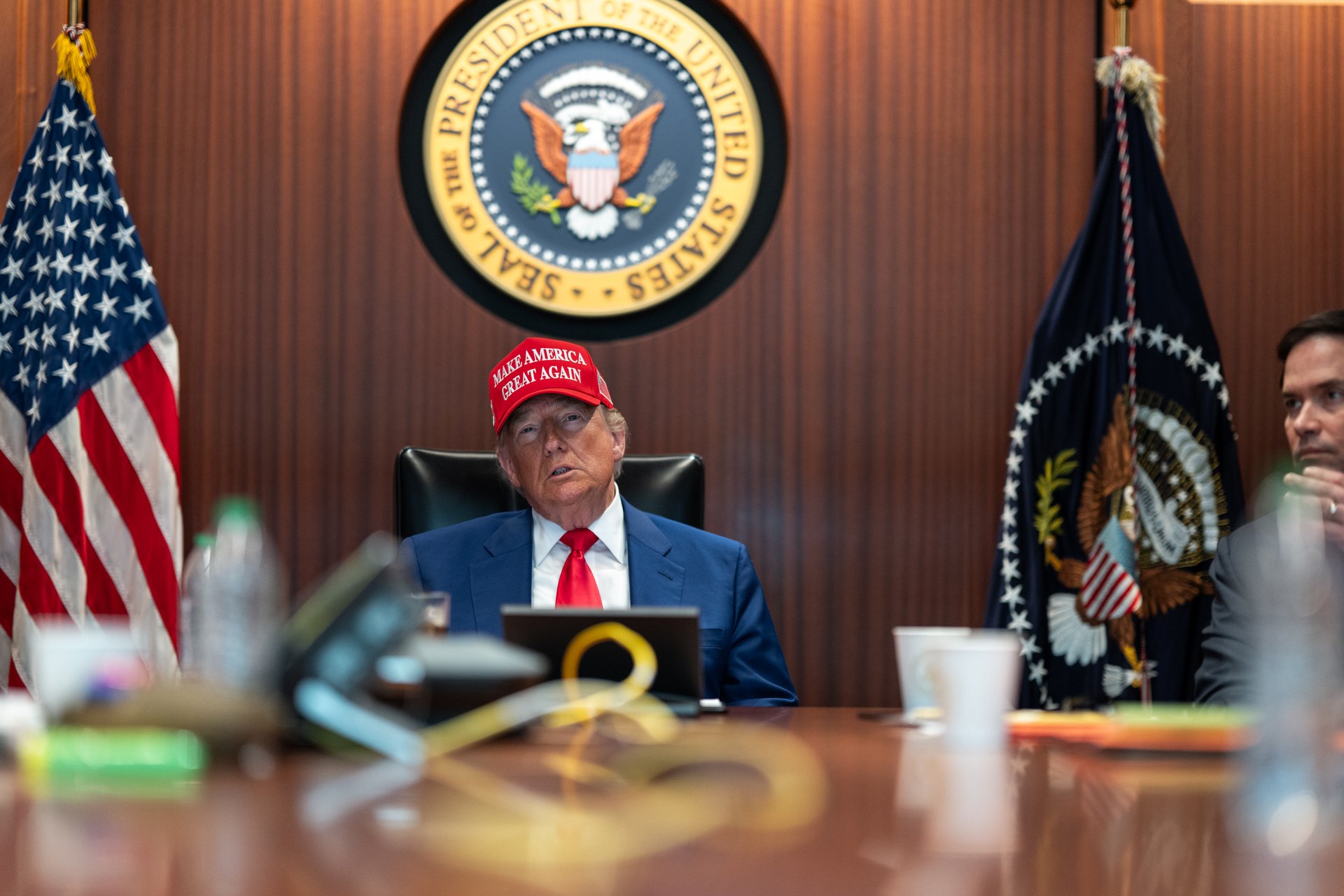
A Trump administration official said the administration will remain in "close coordination" with key oil producers
President Donald Trump on Monday pressured oil companies to keep a lid on prices in the wake of U.S. airstrikes on three Iranian nuclear facilities over the weekend.
"EVERYONE, KEEP OIL PRICES DOWN. I'M WATCHING! YOU'RE PLAYING RIGHT INTO THE HANDS OF THE ENEMY," Trump said in a social media post. "DON'T DO IT!"
He followed up three minutes later with another post on Truth Social. "To The Department of Energy: DRILL, BABY, DRILL!!! And I mean NOW!!!"
A Trump administration official said the administration will remain in "close coordination" with key oil producers, adding that officials haven't detected a supply interruption so far.
"Key oil market factors and the many tools at our disposal alongside the President’s commitment to peace through strength should all be reassuring to the market," the administration official said.
Trump's comments illustrate the public and sometimes aggressive rhetoric he's employed to dictate the behavior of publicly traded firms. The president also lambasted Apple and Walmart for some decisions they took earlier this year to handle the effects of ongoing trade wars on their core operations.
Experts said the president's statement would do very little to sway crude oil prices. "This does nothing as oil prices aren't controlled by any entity, rather the market's assessment of what oil is worth," petroleum analyst Patrick de Haan said on X.
Trump isn't the first to lash out at oil companies: Former President Biden also did the same to prevent what he called "profiteering" at the gas pump.
At one point, Biden threatened to pursue higher taxes on the sizable profits of large oil companies in the weeks leading up to the 2022 midterm elections. "It’s time for these companies to stop war profiteering... give the American people a break and still do very well," Biden said at the time, as gas prices were spiking from Russia's war against Ukraine. Those taxes never materialized.
Oil prices have climbed 10% since the start of the Israeli military campaign against Iran's nuclear program on June 13. The U.S. military struck a trio of Iranian nuclear sites on Saturday, provoking fears of Iranian retaliation that disrupts oil markets particularly if it moves to block access to the Strait of Hormuz. It's one of the most critical global shipping lanes for crude oil. The Iranian government has said it reserves the right to respond to the U.S. attacks.
White House officials projected confidence that oil-producing nations had abundant reserves that would soften the blow of a possible Iranian counterattack. "There's a lot of room to adjust should we need to," White House National Economic Council Director Kevin Hassett told CNBC.
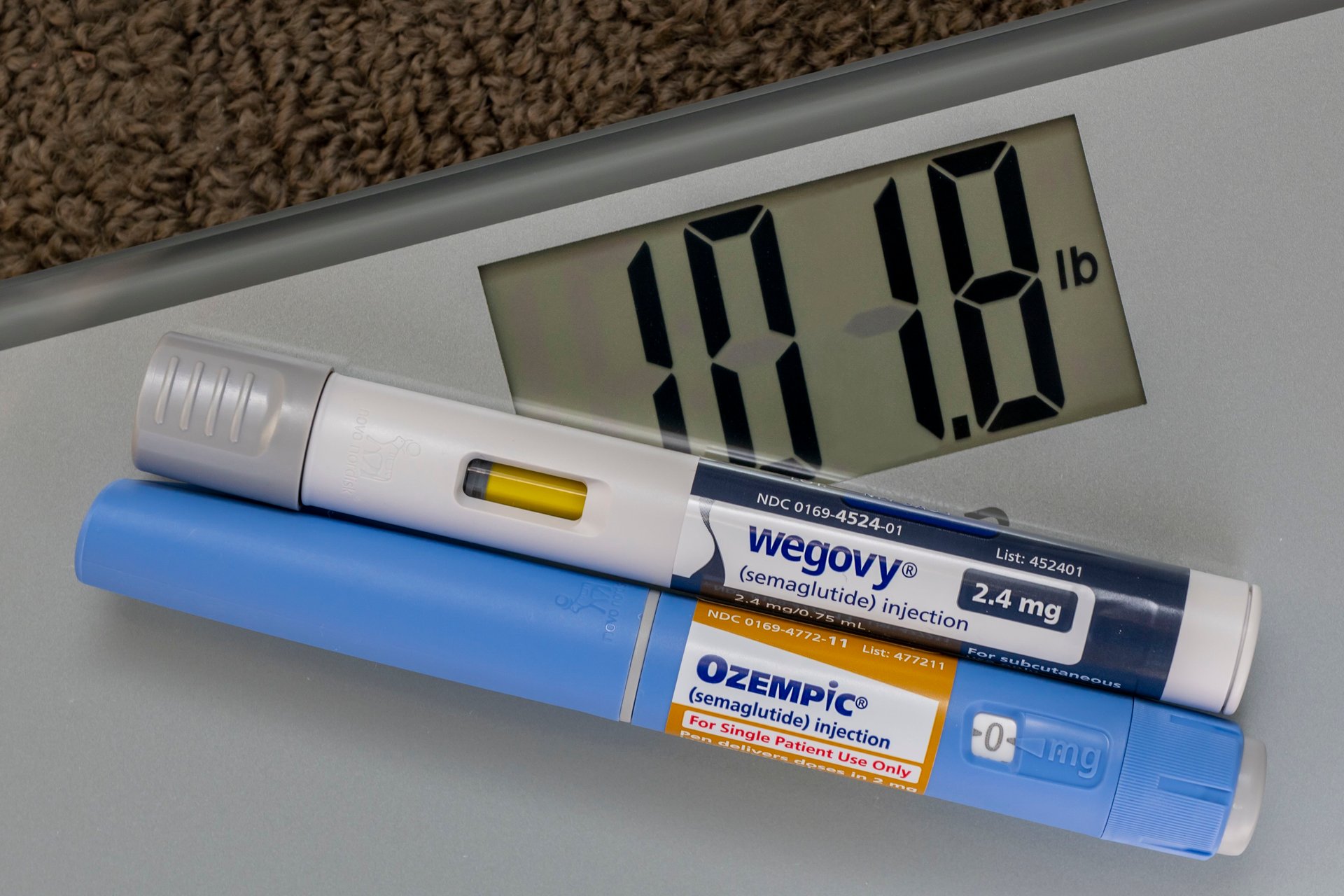
The termination, which means Wegovy will not longer be available on Hims & Hers, sent Hims & Hers stock down sharply
Novo Nordisk said Monday that it was ending its partnership with Hims & Hers, accusing the telehealth company of "deceptive promotion and selling of illegitimate, knockoff versions" of its weight loss drug Wegovy.
The termination, which means Wegovy will not longer be available on Hims & Hers, sent Hims & Hers stock plummeting, with shares down almost 27% in Monday morning trading. Novo Nordisk stock fell about 5%.
Novo Nordisk, the Danish pharmaceutical giant behind the weight loss drugs Ozempic and Wegovy, said Hims & Hers "has failed to adhere to the law which prohibits mass sales of compounded drugs under the false guise of 'personalization' and are disseminating deceptive marketing that put patient safety at risk."
"Novo Nordisk is firm on our position and protecting patients living with obesity," Dave Moore, Novo Nordisk's executive vice president for U.S. operations, said in a statement. "When patients are prescribed semaglutide treatments by their licensed healthcare professional or a telehealth provider, they are entitled to receive authentic, FDA-approved and regulated Wegovy. We will work with telehealth companies to provide direct access to Wegovy that share our commitment to patient safety — and when companies engage in illegal sham compounding that jeopardizes the health of Americans, we will continue to take action."
Hims & Hers didn't immediately comment to CNBC and Reuters.
The telehealth company announced in April that it would begin offering Wegovy on its platform, with a price point starting at $599.
“Bringing our teams together and continuing to explore our shared commitment and focus on delivering the future of healthcare has been inspiring,” Hims & Hers founder and CEO Andrew Dudum said in a statement about the Novo Nordisk partnership at at the time. “We share a vision of what consumer-centered healthcare looks like, and this is just the first step towards delivering that future.”
Novo Nordisk framed deals with Hims & Hers and with other telehealth platforms as a way to expand its customer base as the federal government cracks down on compounded versions of Wegovy. Pharmacies can make customized versions of drugs that are considered by the Food and Drug Administration to be in shortage, but the FDA declared in February that the semaglutide shortage was over. Pharma companies including Novo Nordisk and Eli Lilly have taken legal action against compounding pharmacies since then.
—Kevin Ryan contributed to this article.